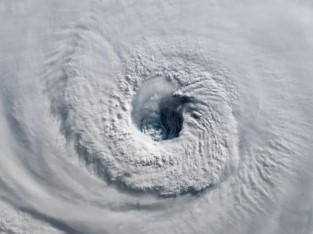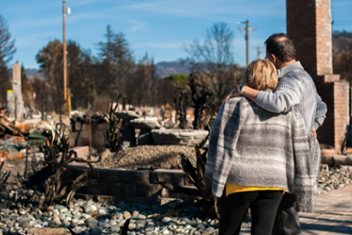- Home >
- How a Simple Shift in Mindset Can Save You in a Flood
How a Simple Shift in Mindset Can Save You in a Flood


Flooding causes more damage in the United States than any other severe weather-related event, an average of $5 billion a year.*2 And when disaster strikes, realizing you should have taken the steps to protect your family and valuables after the fact is little help. A simple shift in mindset to focus on preparation and prevention can save valuable time, heartache, and money in the long run.
SIMPLE WAYS TO CREATE A CULTURE OF PREPAREDNESS IN YOUR HOME.
Assume you are at risk
There’s no need to be an alarmist but, whether you live in a flood zone or not, everyone is at risk for flooding. Many people only think of floods resulting from storms, but they can happen at any time. Everyday issues, like bursting pipes, broken appliances (dishwasher, washing machine, water heater) and even an overflowing toilet can cause costly flooding and water damage in your home. While these issues may not put your family at risk and can even be prevented with innovative devices like the Flo Smart Water Monitor and Shutoff, the impact on your home and valuables could be disastrous if you’re not prepared. A little planning can go a long way.
Stay informed
If you are questioning whether or not you are at risk for environmental flooding, you can visit FEMA's Flood Map Service Center where an interactive map can help you understand any flooding hazards in your area. You may also want to consider signing up for your community’s warning system or listening to the Emergency Alert System (EAS) and National Oceanic and Atmospheric Administration (NOAA) Weather Radio for emergency alerts. Be sure you understand the difference between a “watch” and a “warning.”

Get the whole family involved
When you create a culture of preparedness at home, everyone will be more comfortable knowing what to do and where to be in order to stay safe. While it may seem like a scary topic, discussing it as a family beforehand will ensure better preparedness and make it less scary if it happens. Utilizing games and activities can help make the learning process more fun for kids. And if disaster does strike, know that there are resources to support you in helping kids cope.
Make an escape plan, even if you don’t think you’ll need one
Floods often don’t come with a lot of warning. It can go from potential risk to disaster very quickly. An escape plan is an easy way to keep your family and belongings safe. Remember these three “P’s:”

Prepare
Make a plan for your family so that everyone knows what to do, where to go, and what you will need in order to protect yourselves in the event of a flood. Choose a meeting place in case you get separated, and make sure everyone knows who is responsible for what in your plan. It’s also a good idea to have supplies ready for a quick escape or in case services are out for a time in your area. Remember to include non-perishable foods, cleaning supplies, medicines and water for several days. Here’s a checklist that can walk you through other things to consider.
Practice
Set aside time for your family to practice your plan regularly. Act out what each of you would do in the event of a real emergency. Be sure to learn and practice evacuation routes, shelter plans, and flash flood response together as a family. Update supplies and information as necessary. The smoother you can make things now, the easier it will be later, especially for young kids. As you practice, be sure everyone knows how to answer key questions, like:
- What is your address?
- Who’s your local emergency contact?
- What will you do if we get separated?
- Where are the emergency kits and supplies stored?
Pets
Your pets are an integral part of your family, so be sure to account for them in your plan. Designate a primary person to be in charge of getting them out when possible or coordinate with a friend or neighbor if you need to be away from them for any length of time. Be sure to include your pets when practicing and gathering supplies.
Think ahead about your irreplaceables
Often, we don’t realize how important items like family heirlooms and old photos are until they are gone. Even when flood risks may not seem real, taking simple steps to protect your valuables is a small price to pay to save significant heartache down the road. Here are a few things to keep in mind.

Safes - A safe is a great way to protect your irreplaceable items. In a culture of preparedness, having a safe that is both fire and waterproof is ideal. Be sure to check the rating for each because not all ratings are the same. Small portable safes or document bags are also great options to consider.
Location - Whether you keep your valuables in a permanent safe, a portable fire bag or just a convenient location, knowing exactly where they are can make all the difference when you need to grab and go. If you have a larger safe in your home and you live in a flood zone, it’s best not to keep it in the basement. Higher areas, like bedrooms or closets, are often a good choice.
Safety first - While losing valuables can be painful, it’s always more important to keep you and your family safe. Never go out of your way to find valuables in your home if immediate evacuation is necessary.
Be vigilant around your home
Staying on top of maintenance can help minimize the opportunity for flooding in your home. Keep any appliances that have the potential to flood in good working order. Check gutters often to keep them clear of debris. Be sure your roof and foundation are free of leaks. And pay close attention to running water and pipes that could clog or freeze. Quick and frequent checks can help keep maintenance more manageable.
It may seem unnecessary now, but taking the time to prepare your house and family for a flood can ensure you are not caught off guard later.




